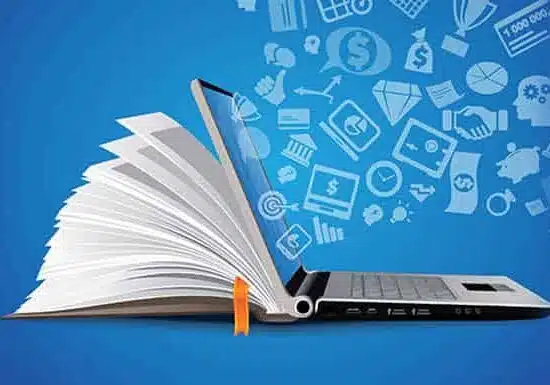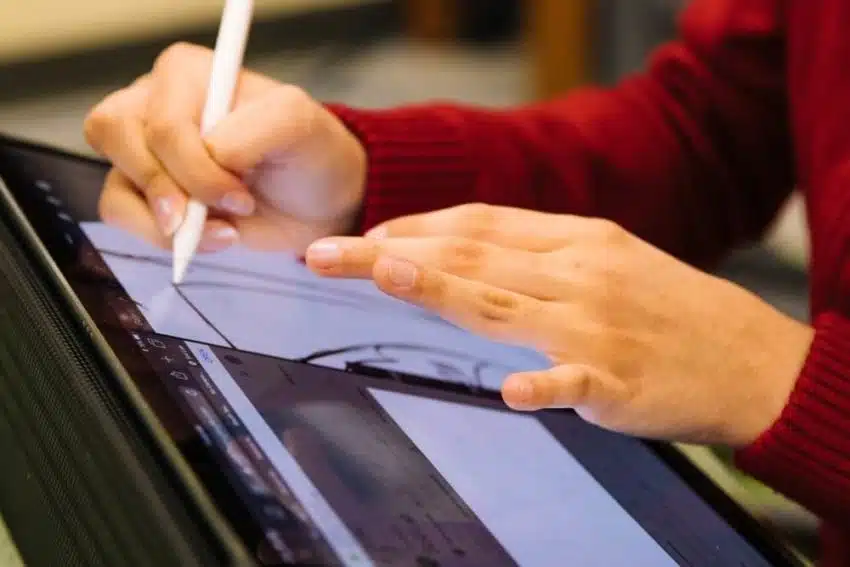The Pivotal Role of Technology in Education
Updated: October 9, 2025

According to a Gallup report entitled “Education Technology Use in Schools,” about 65% of respondents reported that they use digital learning tools to teach on a daily basis. The rapid advancement of technology in education cannot go unnoticed as it is occurring around the world.
Across industries, technology is reshaping how institutions and businesses operate. Technology has proven beneficial and transformation in educational settings in particular. From online colleges to digital certificate programs and hybrid set-ups, technology is reshaping the world of education.
Here’s a look at how technology has changed education for the better.

What is Educational Technology (EdTech)?
Education technology, also known as EdTech, is the use of IT tools in the classroom to develop an engaging and personalized learning experience. Beyond the use of computers, students and teachers can utilize interactive platforms, IoT devices, and even analytical software to better gauge students’ progress using data in real-time.
Learning has never been a one-size-fits-all endeavour, and with education technology, teachers can better serve students’ individualized needs.
Technology Changes Learning: Here’s How!
The benefits of technology and education are far-reaching and growing with each day.
Let’s take a look at some of the upsides of how technology impacts education positively:
24/7 Availability and Accessibility
Technology like the internet and the ability to record lectures, upload learning resources to a platform, and host discussion forums makes it possible to expand one’s access and availability to learn. For example, at the University of the People, students can earn their degrees entirely online through the use of an online learning management system (LMS) called Moodle. Students used to have to be physically located inside a classroom to obtain their education. These days, with online learning (by choice or by circumstance) has led to a revolution in education that makes it accessible to anyone, anywhere.
Metrics for Tracking Progress
With EdTech platforms, students and teachers can report and review progress based on each individual’s performance. Through the use of analytics, teachers can easily visualize how a student is growing or being thwarted. This can help teachers spot inefficiencies or areas that are ripe for improvement or attention.
Follow-up Activities
Once a student leaves their designated class time, homework is a standard follow-up. However, when handing out paperwork, there may be missed opportunities. With education and technology, teachers can design personalized follow-up activities and grant each student the ability to learn at their own pace, even when they are outside of the classroom. For example, teachers can host a variety of options online for follow-up activities, and students, based on their level of understanding, can choose their course of action.
Increased Collaboration
Classroom management tools make it easier than ever for students, parents, and teachers to collaborate. For example, it’s not always easy to get students to work together in groups. But, with online portals and discussion forums, students can contribute in their own space and time to work with other students. Additionally, teachers can communicate and collaborate in an organized manner with parents for feedback and the sharing of ideas, thoughts, and/or concerns.
Flexibility
In traditional education settings without technology, students are expected to pay attention and learn during class time, whether or not it is their optimal time to be productive. Technology in education allows students to flip the notion of a classroom on its head by choosing when and where to learn. Video lectures, recordings, and digital resources make it possible for students to learn at their own pace. Self-paced learning can result in better outcomes, a more engaged student body, and increased creativity.
Personalized Education
With the aid of technology, teachers are better able to provide students with learning activities that are in line with their progress. For example, by recording and uploading a lecture, students who need more time with the material can pause, rewind, and rewatch. On the other hand, if a student has fully grasped a concept, they can move forward more quickly onto the next topic. Educators can also use aptitude reports from learning platforms to better gauge where students are at in understanding the coursework in real-time.
Automated Grading
Grading is an entire job in itself that most teachers end up doing on their own time after work. With machine learning and artificial intelligence, grading has become automated in some instances, especially when it comes to true/false or fill-in-the-blank tests. These tools are giving back teachers their time.
Paperless Classrooms
At the end of the day, printing worksheets and tests is not only bad for the environment, but it is also a huge cost to educational institutions and students alike. Digital education environments provide the opportunity to make a classroom or degree program paperless.
Data-Driven Insights
EdTech and data platforms provide teachers with data that is transformed into valuable insights. These analytics allow teachers to fully and easily understand a student’s strengths, weaknesses, or even learning disabilities.
Potential Hurdles Facing EdTech
EdTech has the power to dramatically improve educational environments. However, there is sometimes resistance to the adoption of technology or new tools within a sector that’s traditionally been so “old school” (no pun intended).
Along with the need for change management from the top-down (administrators, school districts, policymakers, etc.), hurdles facing EdTech include low usage and retention, as well as slow monetization (for businesses/developers of EdTech).
Lastly, just because schools or institutions use EdTech, it doesn’t mean that the need for a teacher is removed. Teachers are necessary to implement the EdTech properly, devise creative lesson plans, and support students’ needs, among other things.

UoPeople Relies on Technology to Run
There are many educational institutions that have fully leveraged the power of technology to transform education and make it accessible for students that would otherwise never have the opportunity to learn.
At the University of the People, our entire learning model depends on technology to run. Our university’s degree programs and certificate programs are entirely online with free digital resources to our enrolled students. Because we utilize technology to operate, we have relatively low overhead costs, which makes it possible to offer tuition-free degree programs to students around the globe.
Education, Revolutionized
Technology in education has led to more accessibility, lower costs, and personalized learning experiences. From education data platforms to online schools and everything in between, it’s easy to see how technology has affected education, and continues to do so with each innovation.
If you’re interested in learning more about earning your degree online, feel free to request more information from our support system at the University of the People.

